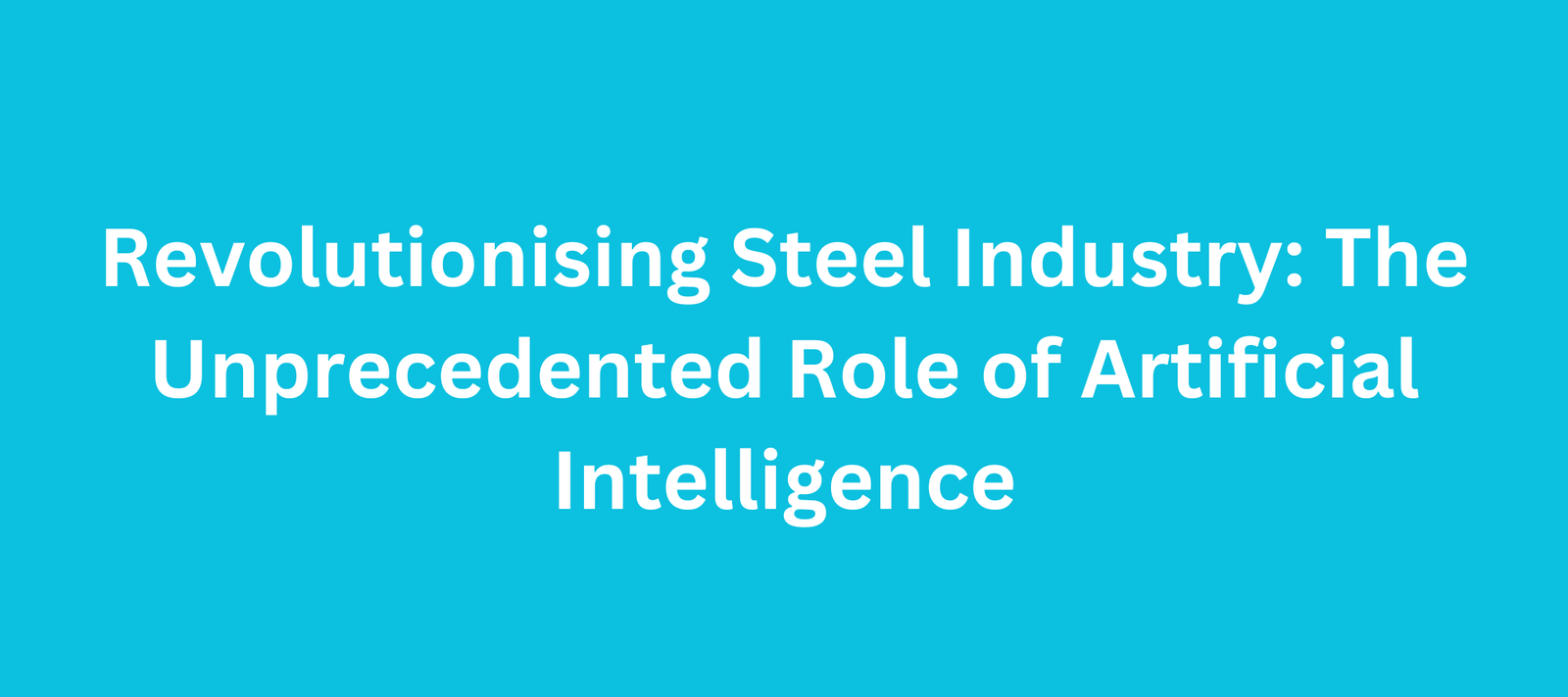Revolutionising Steel Industry: The Unprecedented Role of Artificial Intelligence

At its core, the marriage of Artificial Intelligence (AI) and steel production represents a symbiotic relationship where each entity enhances the other’s capabilities. AI technologies, particularly machine learning and predictive analytics, are providing steel manufacturers with the tools to optimize processes, predict maintenance needs, and even anticipate market demand with unprecedented accuracy.
One of the most impactful applications of AI in the steel industry is predictive maintenance. Traditionally, maintenance activities have followed rigid schedules, often resulting in either under-maintenance (leading to unexpected breakdowns) or over-maintenance (wasting valuable resources). AI, through continuous data collection and analysis, empowers manufacturers to predict equipment failures and perform maintenance precisely when needed. This reduces downtime, cuts maintenance costs, and extends the lifespan of machinery, ultimately leading to increased productivity and cost savings.
In the steel production process, even the slightest improvements in efficiency can have substantial ramifications on both costs and environmental impact. AI algorithms analyse vast amounts of data from sensors, cameras, and other monitoring devices to optimize various steps of the production process. This ensures that inputs are used optimally, waste is minimized, and energy consumption is reduced – a trifecta of benefits for manufacturers aiming to strike the right balance between quality, cost, and sustainability.
The quality of steel products is non-negotiable, given its applications in critical industries like construction, automotive, and infrastructure. AI-driven image recognition and machine learning algorithms enable real-time monitoring of product quality, identifying defects, deviations, and irregularities that might otherwise go unnoticed by human inspectors. This ensures that only products meeting the highest standards make it to market, reducing waste, recalls, and reputational damage.
The steel industry operates in a complex global market influenced by factors ranging from economic trends to geopolitical events. AI’s ability to analyze vast datasets and detect patterns enables manufacturers to make more accurate predictions about market demand and price fluctuations. This information allows companies to adjust production schedules, manage inventory more effectively, and respond swiftly to changing market conditions, thereby enhancing competitiveness and agility.
As environmental concerns take center stage, the steel industry faces mounting pressure to reduce its carbon footprint. AI is playing a pivotal role in this regard by enabling the development of sustainable practices. From optimizing energy consumption to facilitating the use of recycled materials, AI-driven solutions are pivotal in helping the industry transition toward more eco-friendly operations.
Obaid Shah believes that AI’s advanced analytics, predictive modelling, and process optimization capabilities can revolutionise steel production by enhancing energy efficiency, reducing emissions, and optimizing resource usage. Machine learning algorithms can identify patterns in production data, enabling informed decision-making to minimize energy consumption and emissions during various stages of steelmaking. Moreover, AI-driven simulations can aid in developing innovative methods for carbon capture and utilization, while real-time monitoring can ensure that production processes are continuously optimized for minimal environmental impact. In essence, the partnership between AI and the steel industry offers a promising pathway to not only meet decarbonisation targets but also to lead the charge toward sustainable and responsible production practices.
By tapping into the potential of AI, steel manufacturers have the opportunity to redefine their processes, their products, and their impact on the world. This symbiotic relationship between steel and AI is not just a fleeting trend; it’s a transformational journey that will shape the industry for decades to come.
